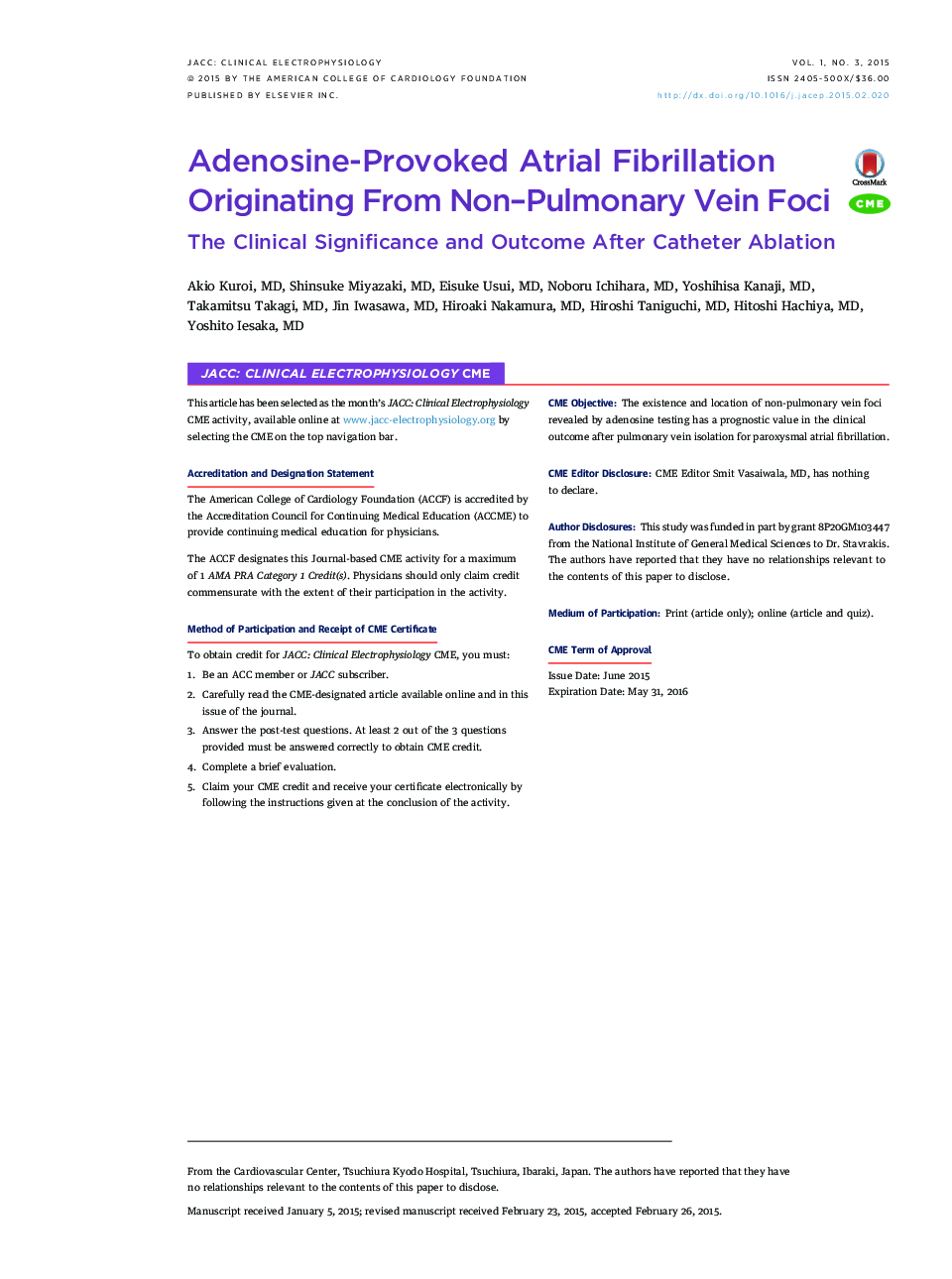| کد مقاله | کد نشریه | سال انتشار | مقاله انگلیسی | نسخه تمام متن |
|---|---|---|---|---|
| 2942219 | 1177108 | 2015 | 9 صفحه PDF | دانلود رایگان |

ObjectivesThe goal of this study was to systematically investigate the incidence and clinical significance of non–pulmonary vein (PV) foci revealed by adenosine/adenosine triphosphate (ATP) testing during atrial fibrillation (AF) ablation.BackgroundATP is reported to provoke AF.MethodsA total of 464 patients with consecutive paroxysmal AF undergoing ATP testing after PV antrum isolation were included.ResultsAF originating from non-PV foci was provoked in 26 (5.6%) total patients during first (n = 20) or repeat (n = 8) ablation procedures. Dormant PV conduction was also revealed by ATP testing in 6 patients. Non-PV foci were located in the superior vena cava (SVC) (i.e., the SVC group) and atria (i.e., the atria group) in 10 and 18 (9 each in the right and left atria) patients, respectively. In the multivariable analysis, being female was the sole independent predictor of ATP-provoked AF originating from non-PV foci (hazard ratio [HR]: 2.52 [95% confidence interval (CI): 1.069 to 5.929]; p = 0.034). After additional ablation targeting non-PV foci, freedom from recurrent AF after the last procedure was similar between the SVC group and patients without ATP-provoked AF but was significantly lower in the atria group than in others (p = 0.0008). Atria group membership (HR: 3.725 [95% CI: 1.692 to 8.199]; p = 0.001) and being female (HR: 1.538 [95% CI: 1.189 to 1.989]; p = 0.001) were significant independent predictors associated with recurrence after the last procedure in the multivariable Cox regression model.ConclusionsATP provoked AF originating from non-PV foci under isoproterenol in 5.6% of patients undergoing paroxysmal AF ablation. ATP testing might be useful for identifying and eliminating AF originating from the SVC. The atria group was associated with a poor outcome after the last procedure despite efforts to eliminate non-PV foci.
Journal: JACC: Clinical Electrophysiology - Volume 1, Issue 3, June 2015, Pages 127–135